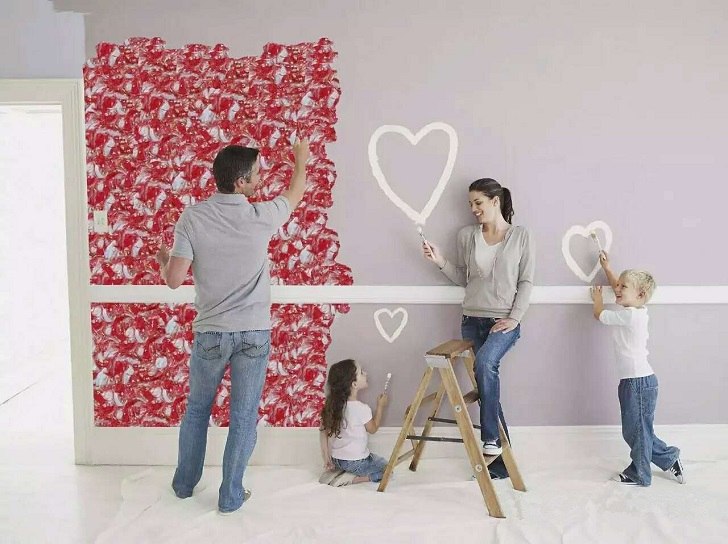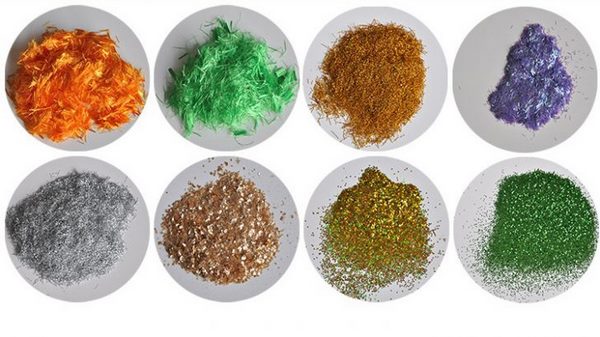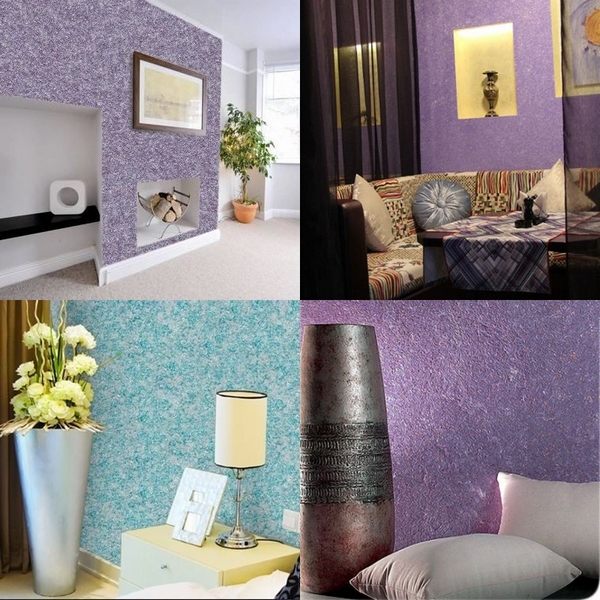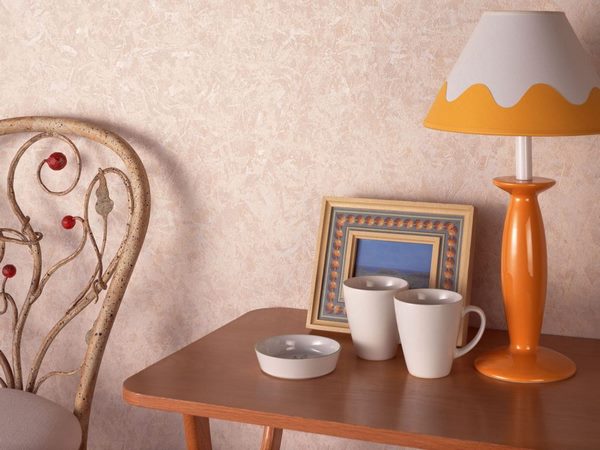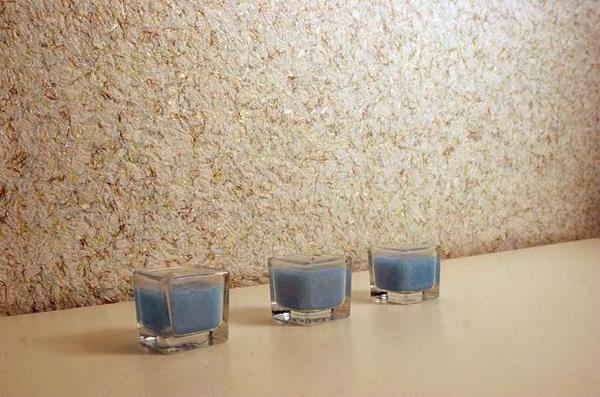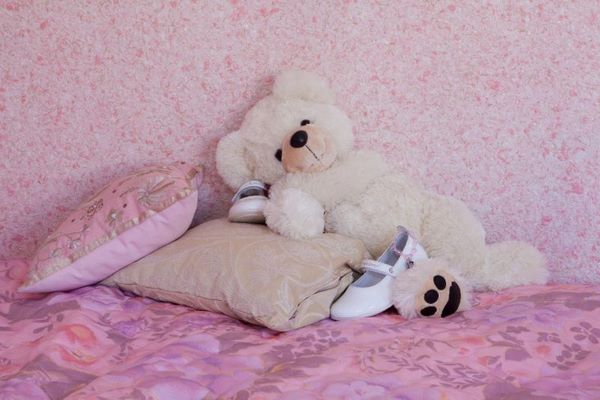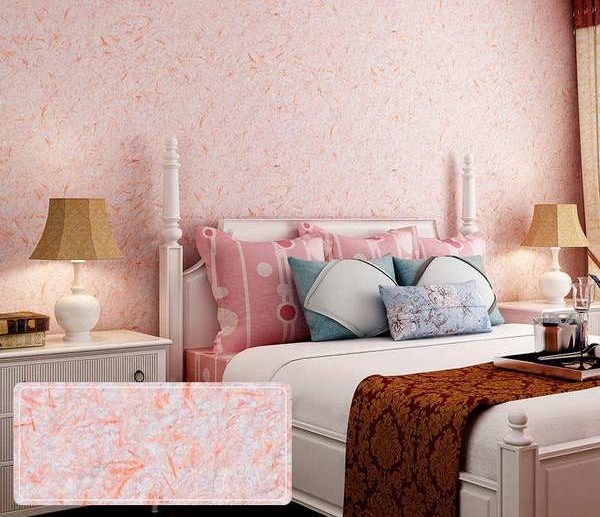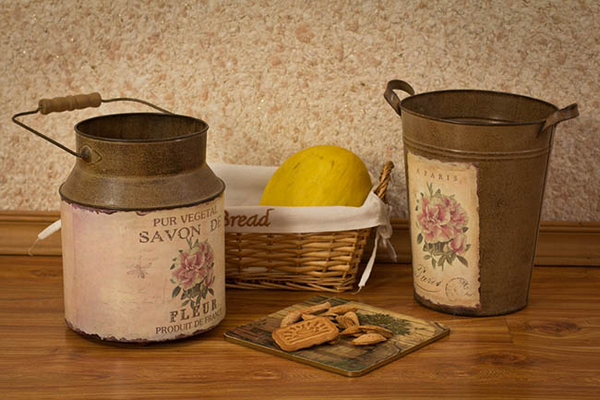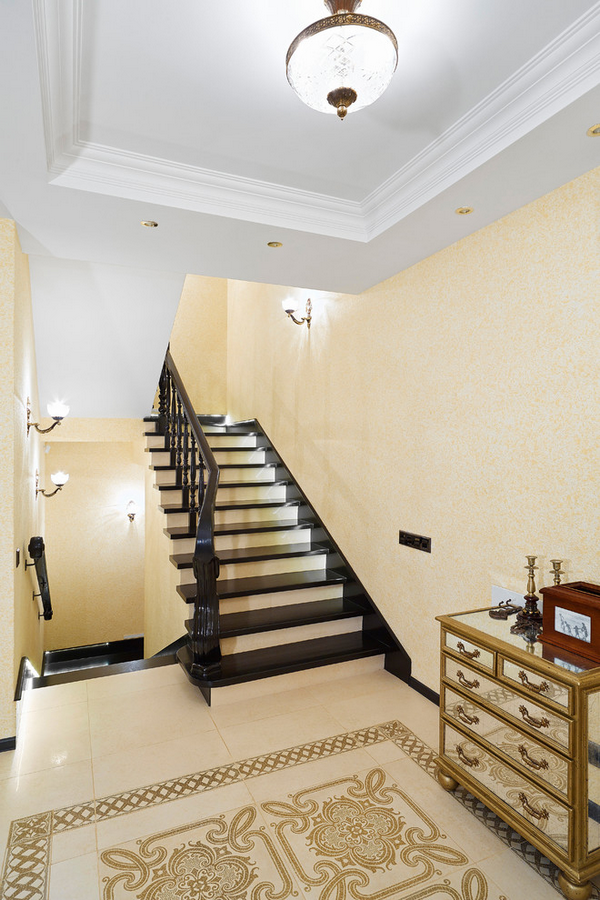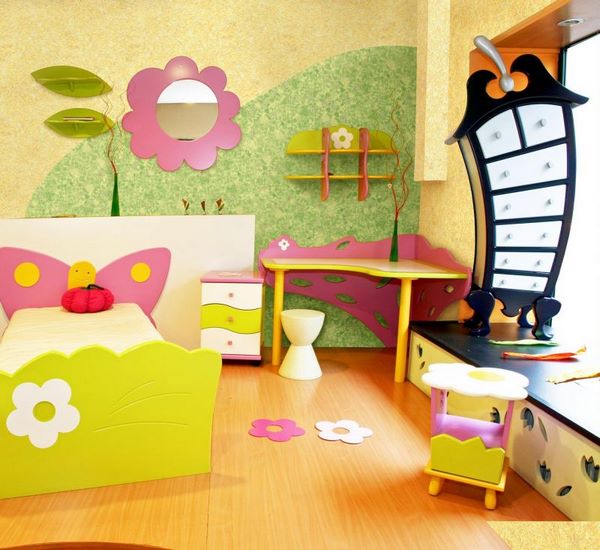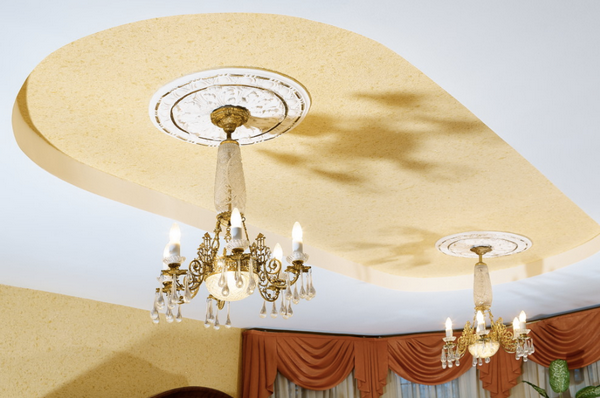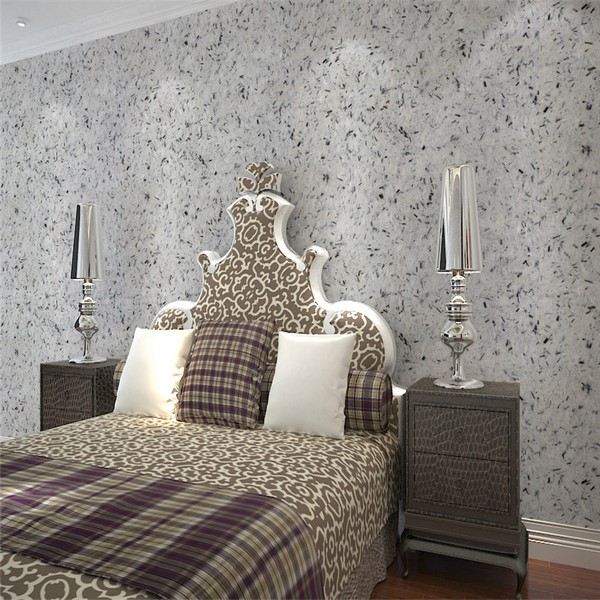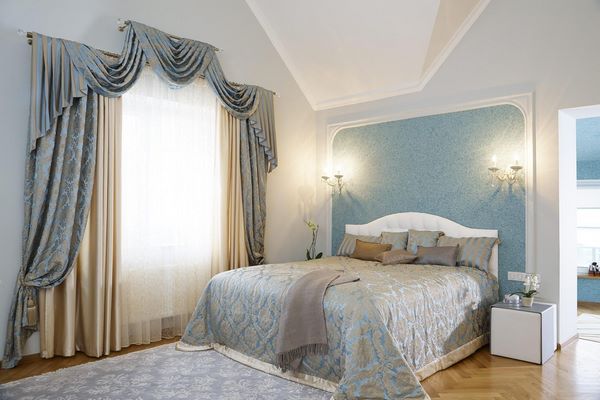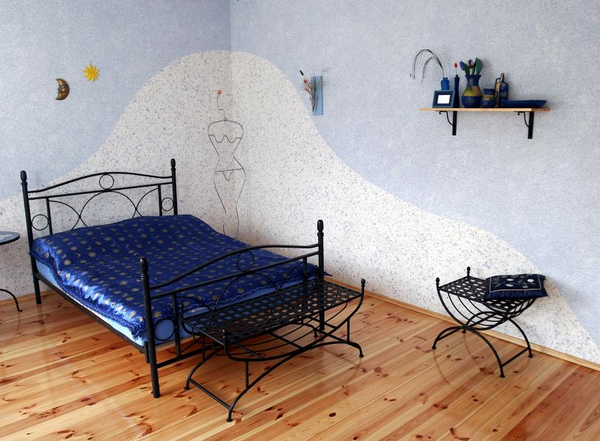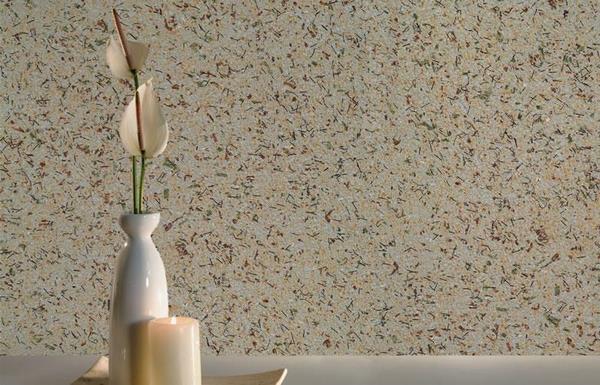Liquid wallpaper is an amazingly beautiful wall finish with great visual appeal which adds interesting texture to the walls without visible seams. This material is also called decorative plaster or silk plaster as it combines the properties and characteristics of both plaster and wallpaper and you can create a variety of wall pattern using different colors.
What is liquid wallpaper and how it is different to plaster? This is a cellulose fiber and adhesive product with additives like cotton or silk fibers, dyes, as well as all kinds of relief elements – wood chips, mica algae and plants, etc. The main difference with plaster is that the wallpaper does not contain sand. Despite the visual similarity, liquid wallpapers differ in the main material used in their production.
- Paper, or more accurately – cellulose fiber is the most affordable variety but not quite durable and with time it can burn in the sun.
- Silk, in addition to paper this variety contains thin threads of silk which give a special sophistication and at the same time improve the quality characteristics. They serve for a long time, without changing the original color under the influence of light or UV rays.
- Natural stone – Most often it is fractions of marble of various colors and sizes. This type of finish is considered the most stable and durable, but it has the highest price tag.
- Combined. They can combine silk and cellulose fibers or other components. This variety has a good UV resistance and durability.
Liquid wallpaper is sold as a dry mix or a ready-made solution. Water is added to it according to the instructions and applied to the surface. The dry mix does not contain color and decorative elements. They need to be added during mixing. After application and drying, it looks neat and attractive. The surface is textured, similar to decorative plaster. It is not advisable to prepare mixtures if you do not have the necessary experience. Incorrect proportions can lead to poor quality of the coating and unpredictable color changes.
Advantages and disadvantages of liquid wallpaper
You can use liquid wallpaper in the interior of any room – bedroom, children’s room, living room or home office, entry hall or corridor. Besides the visual appeal and original, unusual look, the material offers a number of additional advantages:
- Durability – Liquid wallpaper contains special compounds like silk fibers which add to the strength and sunlight resistance. It will retain its original appearance for at least 10 years and damaged areas are fairly simple to repair without affecting the main surface.
- Versatility – Liquid wallpaper offer numerous design options to finish your walls in an original way as per your personal taste.
- Safety is a major concern for every homeowner. The mixture contains only natural materials which do not emit harmful substances so it does not cause allergies and is suitable even for kids’ bedrooms.
- Excellent sound and heat insulation properties – this finishing material has good soundproofing properties and less noise penetrates into the room.
- Breathing – due to the porous structure, the walls “breathe” which allows you to maintain good air and heat transfer.
- Easy installation – on the first place there is no need to prepare the walls before applying the liquid wallpaper as it will hide all minor imperfections. The rough texture of the wallpaper successfully disguises irregular surfaces and makes them less noticeable. Applying the liquid solution on the walls does not require any special skills and tools, just some experience with plaster.
- Maintenance and repair – One major advantage of this wall finish is that you can repaint and repair damaged parts. If necessary, walls covered with liquid wallpaper can be repainted and you can change and update your interior quickly and without much expense.
- Seamless appearance– as far as visual appeal is concerned, liquid wallpaper has a smooth look without joints which makes the material a good wall finish when you want to avoid the cons of traditional wallpapers.
What are the disadvantages of liquid wallpaper? Well, although not many, like any other material and finish, liquid wallpaper has some minuses that can not be ignored.
- Price is one of the major drawbacks as high quality product is more expensive than traditional wallpaper.
- Limited color choice – unlike traditional wallpaper that comes in endless colors, patterns and textures, liquid variety is offered in several colors only.
- High absorbability – the product does have some water resistance if coated with special varnish after application. However, if not coated, it absorbs odors and moisture and if you plan to use it in the bathroom or kitchen or other rooms with high humidity, you need to keep this in mind.
- Low resistance to mechanical impact
- The cellulose fiber variety burns out under direct sunlight.
How to use liquid wallpaper in home interior design?
People constantly search for creative ideas in modern home interior to give their home character and individuality. Using liquid wallpaper allows you to create various interesting and original wall decorations and a truly memorable stylish design of the room. Even two different rooms, finished with the same material, can look completely different – you can use different colors, shades, textures or stencils.
You can use one color or mix different colors to get a variety of shades. One color is a popular choice for traditionally styled interiors while the combination of different tones gives more bold and creative results. For example, a room with liquid wallpaper which combines gold and silver threads will look exceptionally stylish and elegant. This type of wallpaper can be also used to define the different functional areas in open plan living spaces. Another good idea is to use the material to decorate an accent wall in the living room, bedroom or hallway. You can finish the ceilings with liquid wallpaper which is a great way to hide imperfections without spending a lot of money.

